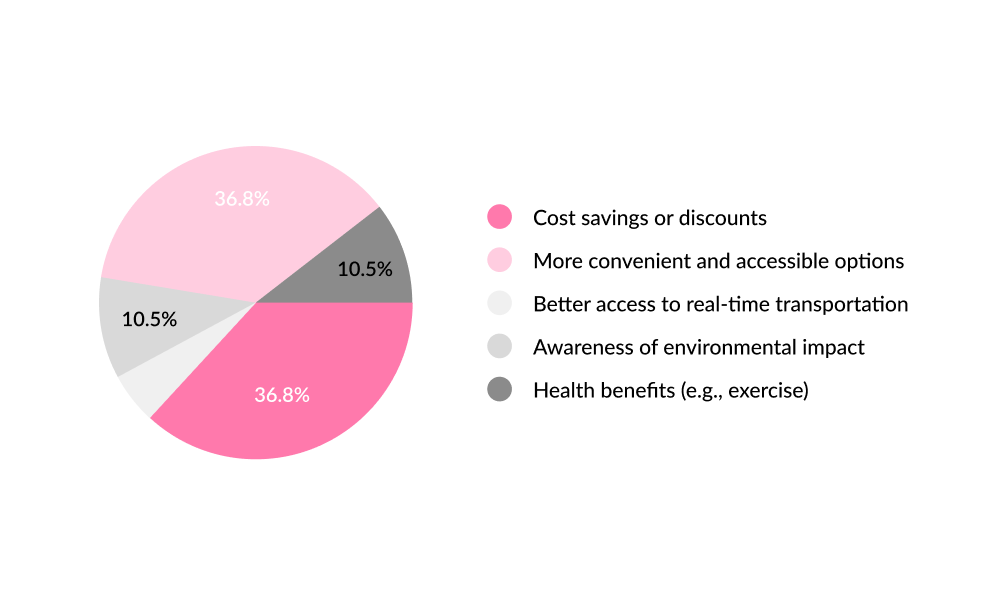Designing Personalized Transportation App - Spring 2024
MyNavMate
6 Weeks
(Summer 2024)
UX/UI Designer
Individual Project
Figma
Figjam
Collaborators
Timeline
Role
Tools
PROBLEM
The current transportation apps prioritize recommending the fastest route, overlooking other important factors such as environmental impact. While speed is often a key consideration for users, solely focusing on it can contribute to increased carbon emissions by promoting less sustainable modes of transportation, like cars over public transit or walking.
SOLUTION
Onboarding
Through targeted questions, the app identifies whether users prioritize environmental impact, time efficiency, or cost when using the transportation app to find routes.
Transportation Personality Types
By analyzing users' responses, the app categorizes them into one of three personalities: Environment Sustainer, Time Keeper, or Budget Balancer.
Customized Maps
Based on the user’s transportation personality, MyNavMate recommends a route prioritizing the user’s favor, while the users can also manually choose between three options: eco-friendly, on time, and affordable.
Research Process
SURVEY
I conducted a survey and received responses from 20 participants to measure people’s awareness and motivation using an eco-friendly transportation app.
Below are some insights from the survey.
1. Convenience and cost are the factors that most influence people’s choice of transportation.
2. The survey responses indicated that 80% of participants said they knew their choice of transportation could impact the environment. Therefore, I was able to know that awareness is not a problem.
3. Lack of convenience and time constraints were the main reasons why people do not frequently use eco-friendly transportation options.
4. People said more convenient and accessible options, cost savings, or discounts would motivate them to use eco-friendly options more often.
IDEATION
Based on the interview findings, I employed the Worst Possible Ideas method for ideation. This technique involves intentionally generating the worst solutions, which can uncover disruptive insights in the ideation process.
I began by listing the worst possible ideas I could imagine, examined them, and challenged their underlying assumptions. From these, I identified several concepts with the potential to lead to a promising idea.
REFLECTION
It was meaningful to identify the limitations of the current transportation app through user research and to present solutions from a new perspective.
Providing users with tailored solutions by asking users favor through transportation personality questions in the onboarding process made me reflect on the importance of understanding user behaviors and preferences to create a more personalized experience.
The MyNavMate project taught me that utilizing new ideation methods such as "Worst Possible Ideas" can effectively provide by thinking about the solution and empathizing with users.









